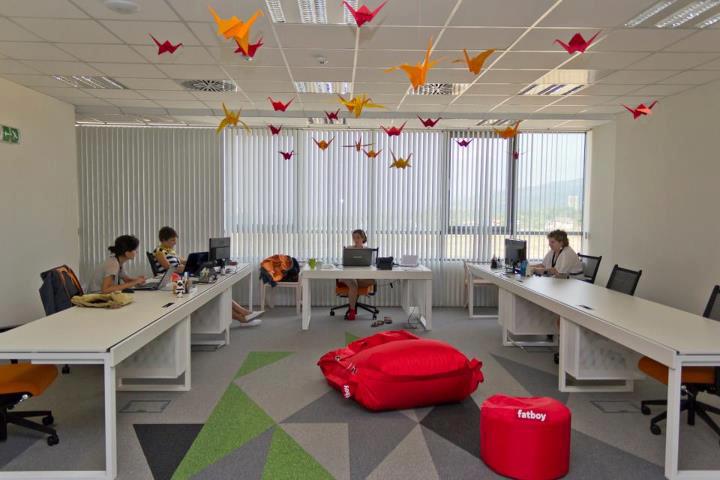WordCamp Europe 2014 will be held in the capital of Bulgaria – Sofia.
If you’ve never been to Eastern Europe, Sofia will be an interesting experience. The city has a young, cosmopolitan vibe, has been rapidly changing for the last 20 years, and is a colourful mess of urban culture, modern landscapes, communist architecture, ornate churches and outdoor markets. It has also been named Europe’s cheapest tourist city for 2014.
WordCamp Europe 2014 will be happening smack in the middle of Sofia, at the top of the National Palace of Culture, a short 5 – 10 min walk from parks, bars, cafes, restaurants and ultimately – all Sofia has to offer.
Conference venue
The National Palace of Culture (pronounced “Natsionalen dvorets na kulturata” by the locals, or NDK), is one of the landmark buildings of Sofia. It’s the largest multifunctional congress, conference, convention and exhibition centre in Southeastern Europe, built in honour of Bulgaria’s 1300 anniversary, in 1981.

The place is huge, and interesting to explore.
The two conference days of WordCamp Europe will happen in Hall 3 and Hall 9, on the fifth and seventh floor of the venue. Registration on Sep 27th is at the sixth floor.
Address:
National Palace of Culture
Bulgaria Square No.1
Sofia 1463
Bulgaria
Here’s a map to the venue and the Foursquare venue.
Contributor day venue

The contributor day will be held on Sep. 29th, at the SiteGround Office in Sofia
Address:
Adora Business Center, fl 3
8 Racho P. Kazandzhiyata Str.
Sofia 1766
Here’s a map to the venue and the Foursquare venue
Getting to Sofia
By plane
Sofia International Airport (SOF) is the largest airport in the country and is located a short 10 minute drive from the city center. It’s not hard to find a reasonable flight to Sofia, there are several low cost companies operating flights from all over the continent and the airport is well connected with the big European hubs in Munich, Frankfurt and Vienna.
Terminals
Make sure you check carefully the terminal at which you are arriving at, or departing from.
Terminal 1 (T1) is used by budget airlines like EasyJet, Germanwings and Wizz Air; and by charter flight operators.
Terminal 2 (T2) handles all ‘traditional’ carriers, and serves as a hub to Bulgaria Air, the national carrier.
By bus
Sofia Central Bus Station is located near the city center.
Its website has a listing of all domestic and international departure & arrival times and costs. Bear in mind that there are three other bus stations for minor destinations.
By train
Sofia Central Train Station is located next to the central bus station.
International trains provide a large number of routes to Sofia, arriving from such places as Kiev, Istanbul, Vienna, Belgrade, Bucharest, Moscow, and other common cities.
By car
Access to Bulgaria’s Capital is via several entry points:
1. From the North & South via E79/A6
2. From the East via Thrace Highway E80/A1-A3, or from the old road parallel to the E80 Highway – Zlatitza – Pirdop – Pazardzhik route.
3. From the West via A1/E80, liking the city and the Bulgarian-Serbian Border point of Kalotina.
Tips for when visiting Sofia
We have collected some tips for those of you who are coming to Sofia and plan to enjoy the city a bit more outside of the WordCamp itself. Tips About Sofia for WordCamp Europe 2014 Attendees.
Currency
Bulgaria is in the EU, but still operates with its own currency, the Bulgarian Lev (BGN), which is tied to the Euro; the rate doesn’t change:
1 EUR = 1.96 BGN
It’s easy – cut each price in half and you get the equivalent in Euro.
Most of the local bars, restaurants and shops accept debit and credit cards. Malls and most of the large stores accept Euros, but it’s not a bad idea to carry some cash, just in case. You’ll definitely need cash for transportation – taxis rarely accept debit or credit cards.